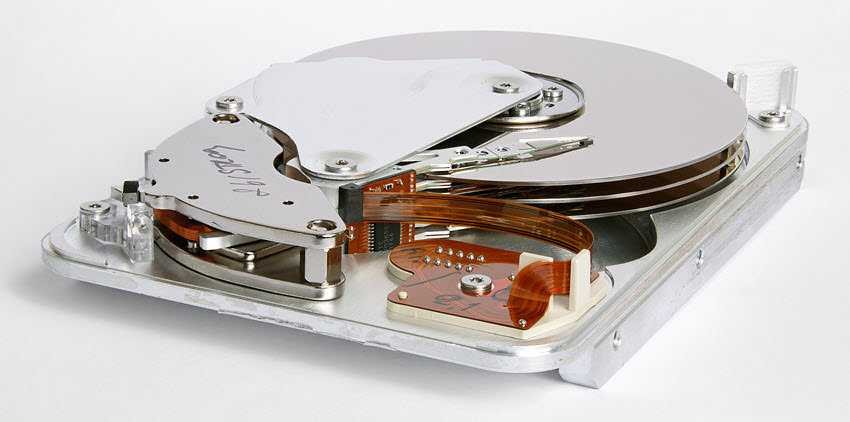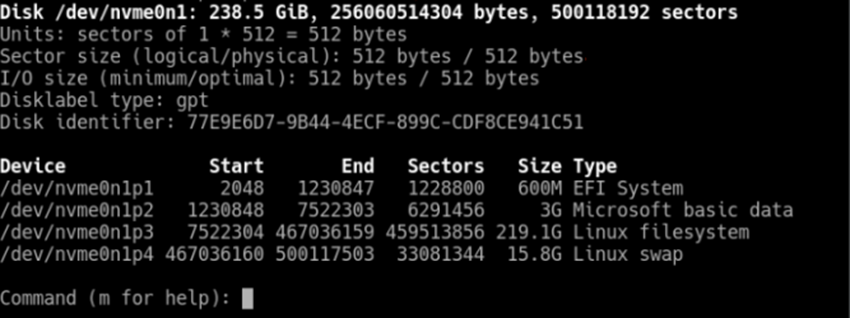You bought your new laptop but the 500GB SSD that promised you is only 476,8 GB.
It's a surprise that most of us have faced. Below we'll see what's going on with the missing disk.
Installed software
The first and most obvious reason you don't have one access in all the space on your hard drive is that there is already software installed on it: your operating system system.
Computer makers like HP or Dell are using Microsoft Windows, while Apple is launching its own macOS. There are also some companies that have computers with Linux or Android.
Regardless of platform running on your computer, operating systems obviously take up some of the storage space. For example, a fresh installation of Windows requires more than 15 GB.
The manufacturer can of course install additional software to the 500GB that was promised to you. This may include utilities such as applications that will keep drivers up to date (drivers) of the computer. Many times we also come across trial versions of applications known as bloatware or applications that come without being part of the operating system (e.g. MacOS Photos and Garage Band applications).
Apps allow to users more features when they start their new computer, provided they need them. Otherwise, they just take up disk space. Sometimes you can uninstall them, just like the default applications in Linux distributions.
Separate hard drive
Another reason that can "cut" space from your disk is the partitions that have been created by the manufacturer. In the past, computers came with an installation CD or DVD that contained the operating system. Today computers have the operating system installed along with a recovery partition. If your operating system crashes, you could reset your computer as before.
For this, manufacturers split your disk into two partitions: the standard partition that contains the OS and one equivalent to these old CDs or DVDs and is used to recover a system.
You may also notice one or more even smaller partitions on your disk. These may belong to bootloaders. The bootloader UEFI, creates a space at the beginning of the drive, but also on the OS disk where it stores the information of various operating systems that exist on the machine. But tracks on the disk are very small and do not contribute much to the "incomplete" space of your disk. In any case, do not try to delete any of them because you will end up with a system that will not be able to boot.
Bytes and Gigabytes
Another reason why your drive looks smaller than you expected to be is has to do with capacity measurement.
We will look at two different things: how the total capacity of the disk is calculated and how this capacity is transmitted to you, the end user.
Calculating disk capacity
Calculating the amount of data your disk can hold is a matter of simple multiplication. A traditional hard drive is made of magnetic trays distributed in tracks, which are in turn divided into sectors. The drives are also graded for the density of the space (the amount of data that can be stored in a domain). Modern disks usually use Advanced Format, which allows up to 4096 byte per domain. This means that the capacity of a given drive is:
[Density bytes per sector] x [Number of sectors per track] [Density bytes per sector] x [Number of tracks per disk] [Density bytes per sector] x [Number of disks]Note that SSDs do not have drives or tracks, but you can assume a price for both, and that type still works. On Mac or Linux, the fdisk command is a great way to identify the exact partitions on your disk.  Of course, who can easily understand a 12-digit number? This is how the prefix is used: "kilo-" for thousands, "mega-" for millions and "giga-" for billions.
Of course, who can easily understand a 12-digit number? This is how the prefix is used: "kilo-" for thousands, "mega-" for millions and "giga-" for billions.
But we will mention another specificity: other sciences operate in decimal numbers, ie the numbering system based on 10 that we see every day. Computers only understand binary or zero and aces. So the definition of these prefixes is not based on thousands but in groups of 1.024. So one kilobyte is 1024 bytes, one megabyte is 1.024 kilobytes, and so on. The formula for calculating gigabyte capacity is shown below:
Total bytes
1.024 bytes per kilobyte
1.024 kilobytes per megabyte
1.024 megabytes per gigabyte
By taking the action from the information we got from fdisk, we get:
256.060.514.304 / 1.024 / 1.024 / 1.024 = 238.474937439 GB
The first number is the first value given to us by the fdisk command (as shown in the image below).
This discrepancy, in how the computer counts on how humans calculate, creates the surprise we described at the beginning of the article.
After all, if you are still worried, you should know that your operating system is technically correct and in terms of capacity.
However, we probably never see a 500GB SSD disc on a showcase advertised with the 476,8 GB capacity.





